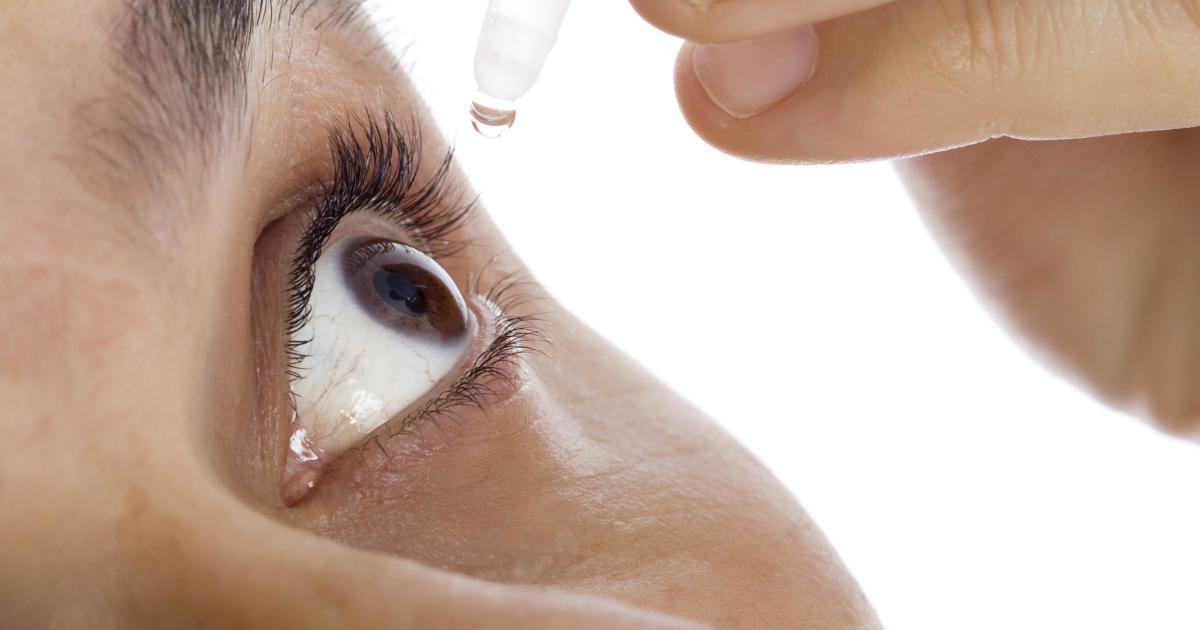Consumers who use eye drops have been spooked this year by a rash of government warnings about dozens of brands potentially containing bacteria.
The Food and Drug Administration earlier this year announced a spate of recalls of eye drop products linked to four deaths and multiple cases of vision loss. In August, the agency warned against using two additional eye drop products because of the risk of potential bacterial or fungal contamination. Most recently, the FDA last week urged consumers to stop using 27 eye drop products potentially tainted with bacteria.
The flurry of warnings has left some consumers uneasy about using their favorite artificial tears. Yet consumers shouldn’t be alarmed, experts told CBS MoneyWatch, noting that the warnings simply shows that regulators are taking a closer look at over-the-counter eye drops, which should make the products suffer in the long run.
Here’s what to know about the recent wave of eye drop product warnings, and how to know if you should switch dry-eye products.
Why did the FDA raise concerns about 27 eye drop products?
The agency issued the warning against 27 dry-eye products marketed under store brands such as CVS Health, Rite Aid, Target Up & Up and Walmart’s Equate after finding harmful bacteria and “insanitary conditions” at a factory where the products were manufactured.
The FDA recommended that retailers and brands selling the affected products remove them from store shelves and websites after the products’ manufacturer and distributor “failed to act quickly” to recall the products, an FDA representative told CBS MoneyWatch.
Why have so many eye drop products been subject to alerts or recalls?
Eye drop products could share the same suppliers or be manufactured in the same facilities, meaning a bacteria outbreak at just one factory could affect multiple products across multiple brands, Carri Chan, a business professor at Columbia University, told CBS MoneyWatch.
The problems may also relate to the FDA’s efforts to scrutinize the products, according to Chan. The FDA began tightening its oversight of eye drops after an outbreak of a drug-resistant bacteria known as Pseudomonas aeruginosa was linked to the products earlier this, an FDA representative told CBS MoneyWatch.
Chan thinks the FDA could find more issues with eye drops that could raise the risk of bacterial contamination, “from the packaging to the actual drops that are going into the bottles,” she said.
Eye drop products, which must be sterile in order to be safe to use, are generally more likely to be recalled because they require a “much finer oversight on the manufacturing side in order to ensure that there’s no contamination whatsoever,” compared to other pharmaceutical products, Chan said.
How do I know if my eye drop product has been included in a an FDA warning or recall?
The FDA is keeping an up-to-date list of eye drop products that consumers should throw away immediately. You can also consult the website of your eye drop product’s manufacturer to check if the product you normally use has been recalled.
What can I do to stay safe?
Eye-drop users should be able recognize the signs of eye infection and seek medical help immediately if they experience adverse reactions to their regular brand of eye drops, Dr. Christopher Starr, spokesman for the American Academy of Ophthalmology, told CBS MoneyWatch. The signs of an infection include discharge, redness or pain, he said.
In addition, consumers should always check the expiration date of their eye drop products before using them, Starr said. That’s because even non-recalled, well-manufactured eye drops can begin to host potentially harmful bacteria beyond their best-use date, Starr said.













